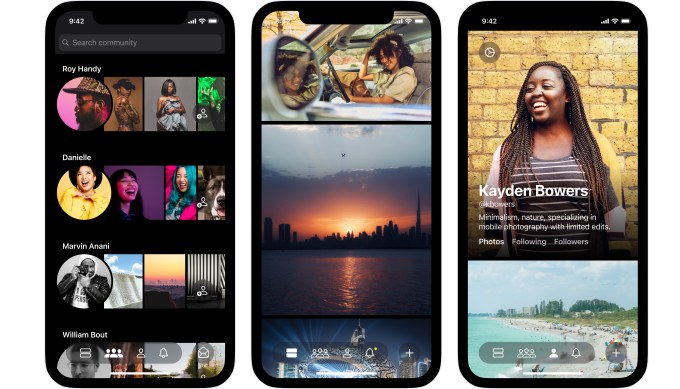News: Talking shop with Twitter’s recent head of corp dev — and now VC — Seksom Suriyapa
Seksom Suriyapa was seemingly destined to land at a venture firm. A Stanford Law graduate, he worked at two blue-chip investment banks before joining the cybersecurity company McAfee as a senior corp dev employee, later logging six years at the human resources software company SuccessFactors and, in 2018, landing at Twitter, where he headed up
Seksom Suriyapa was seemingly destined to land at a venture firm. A Stanford Law graduate, he worked at two blue-chip investment banks before joining the cybersecurity company McAfee as a senior corp dev employee, later logging six years at the human resources software company SuccessFactors and, in 2018, landing at Twitter, where he headed up its 12-person corporate development team until June.
The bigger surprise is that Suriyapa — who just joined the L.A.-based venture firm Upfront Ventures — didn’t make the leap sooner. “The catalyst was finding a firm that felt like the exact right fit for me,” says Suriyapa.
We talked earlier today with Suriyapa — who lives and will remain in the Bay Area — about his new role at Upfront, where he will be leading its expanding growth-stage practice with firm founder Yves Sisteron.
He also shed light on how Twitter — which has been on a bit of buying spree — thinks about acquisitions these days. Our chat has been edited lightly for length.
TC: How did you wind up joining Upfront?
SS: [Longtime partner] Mark Suster and I were introduced through a mutual business acquaintance in the venture world, and I got to know him over a period of time and really came to find him to be a remarkable individual. He’s thoughtful about the business itself, he’s an incredible brand builder. I think you could argue that [Upfront] put L.A. on the venture map.
TC: It was also, for a long time, an early-stage firm, but now it has a ‘barbell’ strategy. Is your new job to make sure it can maintain its stake in its portfolio companies as they grow? Can you shop outside of that portfolio?
SS: The mission for me will be supporting the best of Upfront’s hundred-plus existing portfolio companies that are poised to scale, and also to invest in companies not currency on the platform, and I anticipate [the latter] will happen more and more over time.
TC: Twitter was a lot more active on the corp dev front during the years when you were there. Why?
SS: When i joined in 2018, Jack Dorsey had been CEO for about three years, and really his focus was on the core mission of driving the public conversation, and in doing that, Twitter shrunk itself out of a lot of businesses and [shrunk] people wise as well.
TC: I remember it laid people off in 2016.
SS: And one of the offshoots of that was way less in the way of newer products, so there were no new acquisitions in the three years prior to me joining, and that muscle atrophies if you don’t exercise it. So [ahead of me] Jack had transformed the management team, which had been, relatively speaking, a revolving door of executives until that point, and I was brought in with a specific mandate of reviving a corporate development practice that had been quiet for a few years. I’d known [CFO] Ned Segal when he was a banker at Goldman Sachs and [while] I was at SuccessFactors, so when I heard about the role through the grapevine, I reached out.
TC: And Twitter starts shopping, buying up the news reader service Scroll, the newsletter platform Revue. Were these decisions coming down from the top or vice versa?
SS: The best way to describe it would be that it was product-need driven. The company had a few different objectives. One was to diversify Twitter from its dependency on being an ad-driven business. Something like 80% of revenue comes from ads.
Second, there’s an incredible need to ramp up its machine learning and artificial intelligence as a company. If you’re looking for toxicity in conversation, it’s not scalable to hire tens of thousands of people to do that. You need machine learning to find it. Twitter done well is also able to show you the conversations that are most interesting to you, and to do that, it has to take signals from what you follow and spend time reading and what you interact with, and that, at its core, is ML AI. [Relatedly] Jack has a vision that anybody who tweets in whatever their native tongue is should be able to talk with someone else in their native tongue as part of a global conversation, and to do that, you need [natural language processing] techniques galore.
TC: There’s also this focus on consumer applications.
SS: That’s the third objective. What are the tools that followers and creators can use in conversation with each other? So [Twitter] added audio [via its Clubhouse rival Spaces]. We bought Revue, which is a competitor to Substack. So there’s a lot of innovation happening around the type of content that someone should expect to see or create on Twitter.
TC: Would you describe these acquisitions as proactive or reactive?
SS: From the outside it would seem reactive, but the reality is we’d been thinking a lot about something like Spaces even before Clubhouse took off. I think what’s noticeable to me is [Spaces] is one of the first times you’ve seen a company like Twitter build up a capability and a new product area that’s going head-to-head going against a company that’s focused only on that realm, and it’s competitive from day one. Twitter beat Clubhouse in [offering an] Android version because it poured resources into it, and I’d argue that a lot of the mechanics of Twitter and the fact that creators are on Twitter puts it in an awesome spot to win this segment.
Twitter also just has a huge amount of expertise in finding toxicity and things you want to be wary of when you’re a social media play, and a company of Clubhouse’s size, at least in its initial days, will have a hard time getting there.
TC: Twitter has so many interests, including around cryptocurrencies and decentralization.
SS: In terms of priorities at Twitter, a lot is under wraps in terms of the technologies that we expect [will rise up over] the next five to 10 years, but [a lot of thought is being given to] the impact of cryptocurrency and the underlying protocols around it and how Twitter participates in a trustless, permissionless [world] where there’s a decentralized internet that can protect people’s privacy and allow people not to worry where their content is stored. People think of Twitter as a consumer app but there’s amazing and considerable diversity under the hood.
TC: Do you think because of the current regulatory environment that it has a better shot at working with companies and projects that might have gotten snapped up by Facebook and Google?
In terms of the regulatory environment, the reality is that even if you take the Facebooks and Googles out of the equation, there are acquirers that are competitive that would step up and buy things, so it’s a little short-sighted to think of just those two. But even when they were active, we were winning [deals]. A lot of the companies we acquired self-selected to be at Twitter because they like what it stands for, they like the way that Jack Dorsey leads the organization, and they believe in the stands that he takes and the positions that he and his leadership espouse.
TC: You’re now representing a very different brand. How will your work at Twitter help you compete for deals on behalf of Upfront?
SS: I have this network of incredible entrepreneurs around the world because of companies across my career that I’ve helped acquire or tried to acquire or who are running businesses; I also [have relationships with] VCs at different stages who actively spot businesses around the world [and introduce them to corp dev teams]. You might also know that Twitter has a diversity and inclusion program where they intend to have 25% of leadership be diverse over the next several years, so my team was often involved in finding the best ways to find diverse targets to buy. I also led a series of LP investments into newly emerging funds, some LatinX-founded, some women-founded, some Black-founded, some that were diverse from a geographic standpoint that are scouting companies in far flung places . . .
TC: Does Twitter also make direct investments?
SS: We did direct investments but [backing fund managers] is a more leveraged approach. Most of them are seed funds and they’ll in turn invest in 30 to 60 companies each. But yes, I scouted companies in far flung places, including [India’s] ShareChat where I served on the board for two years. [Editor’s note: TechCrunch reported earlier this year that Twitter explored buying ShareChat at an earlier point; the company has since raised numerous rounds of funding and was most recently valued by its investors at nearly $3 billion.]
TC: You have a lot of relationships, but it would still seem really hard to compete for growth-stage deals when so many other outfits are now investing there, too. How do you plan to compete?
SS: I will clearly be drawing on those networks to find deals. I’ll be investing in sectors where Upfront has already invested in, but initially I’ll be double-clicking that ihave a strong interest in, including around creator economy ecosystem, because I did o much of that at Twitter. And w3b 3.0, ow this permissionless comes togerh, edge computing ML AI and shared date that goes across a number of disciplines that i’ve workedin, i think one of strong points that will cinterdiscplianry areas, also in sustainability are but I won’t kid myself. You compete by learning what your value proposition is. At Twitter, my strategy was winning on speed, knowing people earlier, and [underscoring] Twitter’s value proposition [to close deals]. I can’t talk about my [VC] strategy without having implemented yet; I’ll have to figure out what’s most interesting to entrepreneurs that the megafunds don’t offer.






